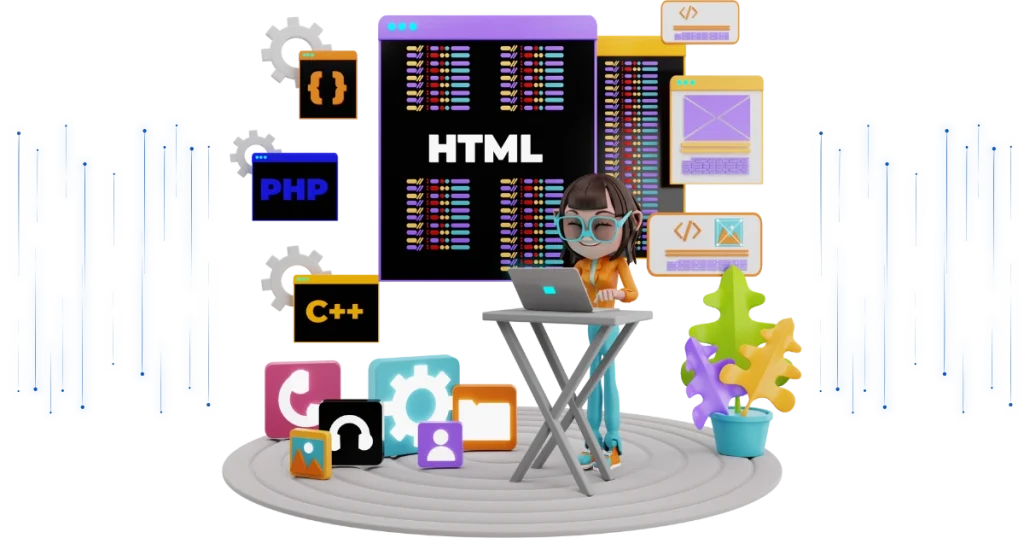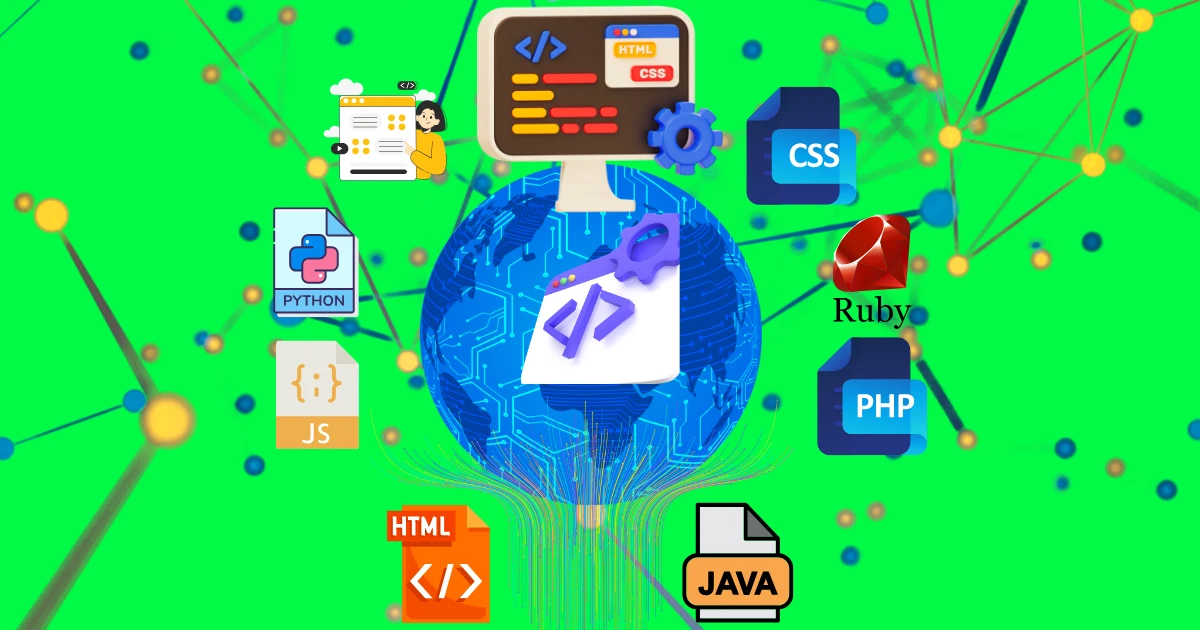In today’s fast-evolving digital landscape, web development has become more complex and dynamic than ever before. As a developer, staying up-to-date with the latest tools, frameworks, and technologies is crucial for building fast, scalable, and user-friendly websites and applications. Whether you’re a beginner or an experienced developer, mastering modern web development tools is essential for creating robust and interactive online experiences.
In this ultimate guide, we will dive deep into the best web development tools and technologies you need to know, from frontend to backend, along with best practices and tips to enhance your development workflow. Let’s explore these tools and technologies that are revolutionizing the web development landscape.
What is Web Development?

Web development is the process of creating websites or web applications that run on the internet or an intranet. It involves several aspects, including:
- Frontend Development: Creating the parts of the website or application that users interact with directly.
- Backend Development: Building the server-side infrastructure, databases, and APIs that power the application.
- Full-Stack Development: Combining both frontend and backend development skills to create end-to-end applications.
Whether you’re developing a simple static website or a complex dynamic web application, leveraging the right tools and technologies can significantly improve efficiency, scalability, and performance.
1. Frontend Development Tools and Technologies
Frontend development refers to the part of web development that focuses on the visual and interactive elements of a website. It involves technologies such as HTML, CSS, and JavaScript, along with a variety of frameworks and libraries. Here are the most essential frontend tools you should know:
HTML5: The Building Block of Web Content
HTML (HyperText Markup Language) is the foundation of web development. HTML5, the latest version, introduces new elements like <article>, <section>, <header>, and <footer> for better document structure. Additionally, HTML5 supports embedded audio and video content and provides APIs for geolocation, web storage, and offline capabilities.
CSS3: Styling Your Website
CSS (Cascading Style Sheets) is the language used to control the layout and presentation of your web content. CSS3 introduces advanced features like:
- Flexbox and Grid: These layout systems make it easier to create responsive, flexible, and grid-based designs.
- CSS Animations and Transitions: Adding interactive and animated effects to elements for a more dynamic user experience.
- Media Queries: CSS media queries allow you to create responsive designs that adapt to different screen sizes and devices.
JavaScript: Making Websites Interactive
JavaScript is the backbone of dynamic and interactive web content. With JavaScript, you can manipulate the DOM (Document Object Model), handle user interactions, and update content without refreshing the page. Some of the most popular JavaScript libraries and frameworks include:
- React.js: A powerful JavaScript library developed by Facebook for building user interfaces. React allows developers to create reusable UI components and is often used to build single-page applications (SPAs).
- Vue.js: A progressive JavaScript framework that is known for its simplicity and flexibility. Vue is great for building interactive user interfaces and is easier to integrate with existing projects.
- Angular: A full-fledged JavaScript framework developed by Google for building large-scale, complex web applications. Angular provides tools for building single-page applications (SPAs) with features like two-way data binding, dependency injection, and component-based architecture.
Frontend Development Tools and Build Systems
To enhance productivity and streamline development workflows, modern frontend developers rely on various tools:
- Webpack: A powerful bundler that helps you manage and bundle JavaScript, CSS, and other assets. Webpack is often used in conjunction with modern frameworks like React or Angular.
- Babel: A JavaScript compiler that allows you to write modern JavaScript code (ES6+) and convert it into backwards-compatible code for older browsers.
- Sass/SCSS: A preprocessor for CSS that adds variables, functions, and mixins, making it easier to manage and maintain your stylesheets.
- PostCSS: A tool for transforming CSS with JavaScript plugins. It can be used for things like autoprefixing and optimizing your CSS.
2. Backend Development Tools and Technologies
Backend development focuses on the server-side infrastructure, databases, and application logic that support frontend interfaces. Here are some essential tools for backend developers:
Programming Languages for Backend Development
- Node.js: A JavaScript runtime built on Chrome’s V8 JavaScript engine, Node.js allows developers to use JavaScript on the server side. It is known for its speed and scalability, making it a great choice for building high-performance applications.
- Python: Known for its simplicity and readability, Python is widely used for backend development. Popular frameworks like Django and Flask are built using Python and help developers quickly build robust web applications.
- Ruby on Rails: Ruby on Rails is a full-stack framework that follows the convention over configuration principle, which helps developers build applications rapidly. Ruby is known for its elegant syntax, making it a favorite for startups and small teams.
- PHP: A widely-used server-side scripting language, PHP is commonly used for building content management systems (CMS) like WordPress. It is also used in many popular web applications and frameworks like Laravel and Symfony.
- Java: A versatile programming language, Java is widely used for building enterprise-level applications. Frameworks like Spring and JavaServer Faces (JSF) are used to simplify backend development in Java.
Databases: Storing Data Efficiently
Databases are integral to storing and managing data on the server side. They can be divided into two main types:
- SQL Databases: Relational databases like MySQL, PostgreSQL, and SQLite store data in structured tables with predefined relationships. SQL databases are great for handling complex queries and transactional applications.
- NoSQL Databases: Non-relational databases like MongoDB, Firebase, and Cassandra store data in formats like key-value pairs, documents, or graphs. NoSQL databases are designed for scalability and are often used for applications that handle large volumes of unstructured data.
API Development and Web Services
APIs (Application Programming Interfaces) allow the frontend to communicate with the backend. They enable the retrieval of data, authentication, and the performance of various operations. Some popular API tools and technologies include:
- RESTful APIs: Representational State Transfer (REST) is an architectural style used for designing APIs. REST APIs allow clients to interact with server data through HTTP methods like GET, POST, PUT, and DELETE.
- GraphQL: An alternative to REST, GraphQL allows clients to request only the data they need, reducing over-fetching and under-fetching of information. It’s becoming increasingly popular for its flexibility and efficiency.
3. Full-Stack Development
Full-stack development involves both frontend and backend technologies, enabling developers to build complete web applications. Full-stack development tools and frameworks include:
- MERN Stack: The MERN stack consists of MongoDB, Express.js, React, and Node.js. This JavaScript-based stack allows developers to build powerful, dynamic web applications using a single language (JavaScript) across both the client and server sides.
- MEAN Stack: The MEAN stack is similar to the MERN stack but uses Angular instead of React. Angular is a full-fledged framework for building large-scale applications, making it a great choice for enterprise-level web projects.
- LAMP Stack: The LAMP stack consists of Linux, Apache, MySQL, and PHP. This traditional stack is widely used for building dynamic websites and web applications, particularly for content management systems like WordPress.
4. Web Development Best Practices
Beyond mastering tools and technologies, it’s important to follow best practices that ensure code quality, maintainability, and performance:
- Responsive Design: Ensuring that your website adapts to different screen sizes and devices is essential. Use tools like Bootstrap or Foundation for creating responsive layouts.
- Version Control: Use Git for version control to track changes in your code and collaborate with other developers. GitHub and GitLab are popular platforms for managing repositories.
- Performance Optimization: Optimize your code, images, and assets to ensure fast loading times. Use tools like Lighthouse to analyze and improve performance.
- Security: Always prioritize security by following best practices like using HTTPS, preventing SQL injection attacks, and handling user authentication and authorization securely.
Summary
Web development is a fast-paced field that continuously evolves with new tools, frameworks, and technologies. By mastering the right tools for both frontend and backend development, you can create modern, scalable, and high-performance web applications. Whether you’re just starting out or looking to upgrade your skills, staying up-to-date with the latest technologies is key to becoming a successful web developer.
By leveraging modern development tools like React, Node.js, Python, and MongoDB, and adhering to best practices like responsive design and version control, you’ll be well on your way to creating powerful and user-friendly websites that stand out in today’s digital world.
Stay curious, keep experimenting, and happy coding!


